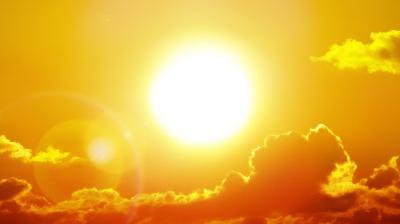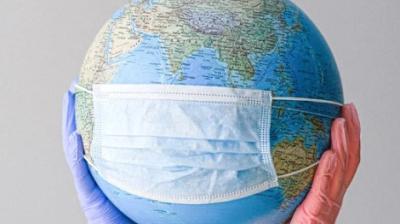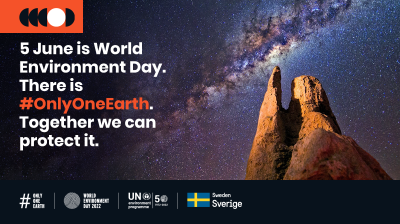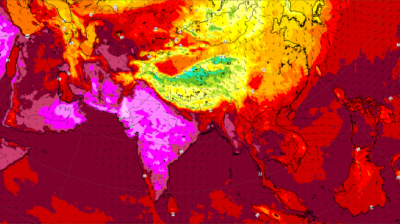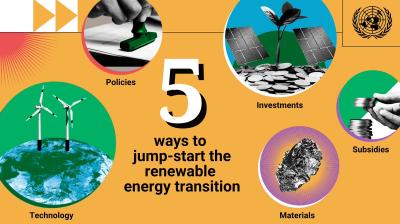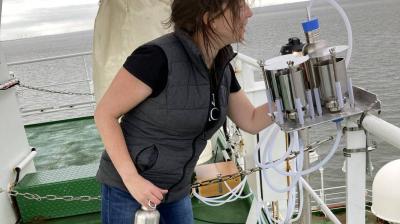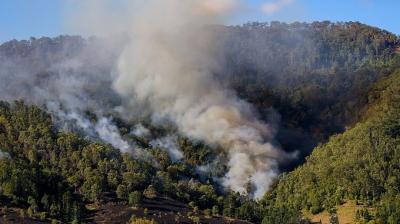Global Atmosphere Watch programme turns 30
WMO’s Global Atmosphere Watch (GAW) Programme is marking its 30th anniversary this year. The programme, which embraces about 100 countries, aims at forging an integrated global understanding of atmospheric composition and change. It coordinates observations across local to global scales, driving high quality and high-impact science while co-producing society relevant products and services.

WMO’s Global Atmosphere Watch (GAW) Programme is marking its 30th anniversary this year. The programme, which embraces about 100 countries, aims at forging an integrated global understanding of atmospheric composition and change. It coordinates observations across local to global scales, driving high quality and high-impact science while co-producing society relevant products and services.
A Union Symposium during the European Geosciences Union (EGU) General Assembly explored the 30 year journey from fundamental Atmospheric Composition Research to Societal Services. It showcased the importance of atmospheric composition research to climate, weather forecasting, human health, agricultural productivity and food security.
The session highlighted the progress made in translating research into services, but stressed that much more needs to be done.
“Global Atmosphere Watch is valued for its coordination, observations, capacity building, outreach and its global focus,” said Oksana Tarasova, Chief of Atmospheric and Environment Research at WMO.
 The Global Atmosphere Watch Programme provides reliable scientific information for a broad spectrum of users, including policymakers, on topics related to atmospheric chemical composition The programme supports international environmental and climate agreements and improves our understanding of climate change and long-range transboundary air pollution through its work on greenhouse gases, aerosols and tropospheric and stratospheric ozone..
The Global Atmosphere Watch Programme provides reliable scientific information for a broad spectrum of users, including policymakers, on topics related to atmospheric chemical composition The programme supports international environmental and climate agreements and improves our understanding of climate change and long-range transboundary air pollution through its work on greenhouse gases, aerosols and tropospheric and stratospheric ozone..
It’s observations on the increase in concentrations of carbon dioxide and other heat-trapping gases are incorporated into the annual Greenhouse Gas Bulletin, which informs decision-makers at the annual United Nations climate change negotiations. WMO is now pioneering an Integrated Global Greenhouse Gas Information System to provide a bridge between science and policy for greenhouse gas emission and sink identification and quantification.
Another benchmark activity is the Ozone Assessment, a joint report every four years with the UN Environment Programme. The observational network, which includes stations in high mountain areas, in the Arctic and Antarctic and on remote islands, is well-placed to monitor the protective stratospheric ozone layer, as well as pollutants including ground-level ozone and aerosols.
Emerging priorities include air quality forecasts and assessment of total atmospheric deposition that impacts ecosystems.
“The celebration of the GAW anniversary at the 2019 EGU has been a resounding success,” said Gregory Carmichael, chair of WMO’s Environmental Pollution and Atmospheric Chemistry Scientific Steering Committee (EPAC SSC) “The presentations were outstanding and showed the importance of atmospheric chemistry research and how it is being implemented in GAW.”
The EGU General Assembly, from 7 to 12 April 2019, brings together the scientific community. The GAW Programme supported a number of early career researchers from developing countries to attend EGU, present the atmospheric science that is carried out in their countries and engage with the international research community.
Highlights of the keynote presentations given by outstanding scientists included:
Gregory Carmichael (University of Iowa) opened the session by providing an overview of the GAW Programme, its structure and activities, and set up the floor for the following lectures.
Markku Kulmala (University of Helsinki’s Institute for Atmospheric and Earth System Research; member of EPAC SSC) highlighted the potential for the Global Atmosphere Watch network to evolve into a much-needed global Earth observatory with well-equipped ground stations around the world to track environments and key ecosystems.
Sara Mikaloff-Fletcher (NIWA) explained how atmospheric measurements revealed a strong forest carbon sink in New Zealand, which highlighted their importance in support to the Paris Agreement.
Xin Huang (Nanjing University) presented how the interaction between aerosols and local meteorological conditions enhances haze pollution.
Vinayak Sinha (Indian Institute of Science Education and Research Mohali) showcased the atmosphere’s impact on crops. Yield losses were found to be even higher than previously thought.
Angela Benedetti (ECMWF) highlighted atmospheric composition being an integral part of the Earth system and its close linkage to weather prediction.
A recording of the EGU event is available here
Results of Global Atmosphere Watch mentimeter survey are here


